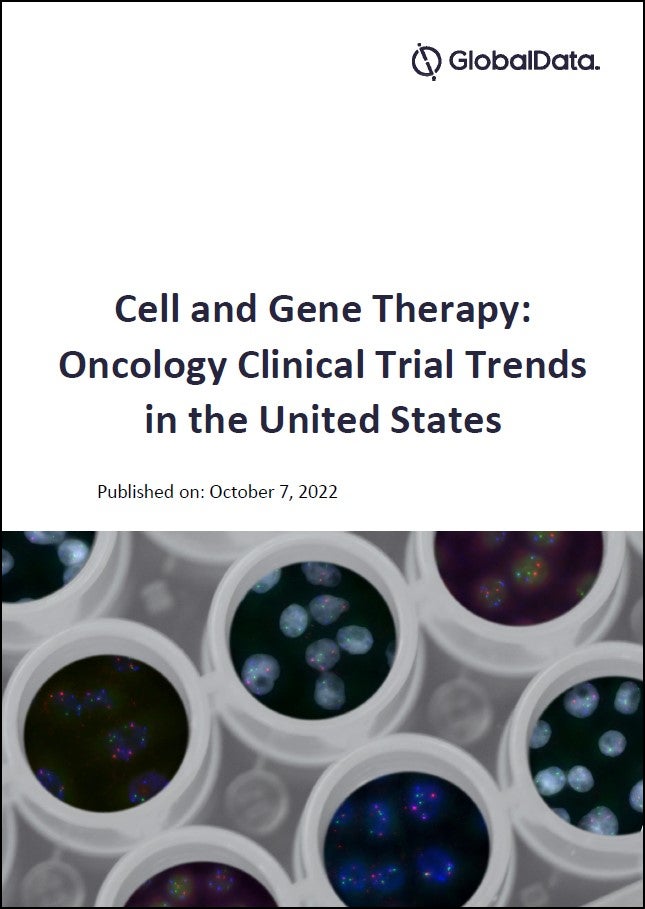Need to Know:
GlobalData’s proprietary model uses a combination of machine learning and an algorithm to calculate an individual drug’s Phase Transition Success Rate (PTSR) and Likelihood of Approval (LoA). While LoA provides the probability of a drug ultimately receiving market authorization, PTSR indicates the probability of a drug’s advancement to the next stage of clinical development. The model uses data points from the individual drugs, clinical trials, regulatory milestones, company, and financial databases.
How well do you really know your competitors?
Access the most comprehensive Company Profiles on the market, powered by GlobalData. Save hours of research. Gain competitive edge.

Thank you!
Your download email will arrive shortly
Not ready to buy yet? Download a free sample
We are confident about the unique quality of our Company Profiles. However, we want you to make the most beneficial decision for your business, so we offer a free sample that you can download by submitting the below form
By GlobalDataOlogy’s cervical, vaginal cancer asset bolstered after suspended Phase III resumes
Ology Bioservices’ cervical and vaginal cancer asset NTO-1151 (triapine) saw its LoA jump after its suspended Phase III trial resumed recruitment. Triapine’s LoA increased by 24 points to 43% in cervical cancer and 23 points to 47% in vaginal cancer.
The LoA changed on 6 September after the Phase III trial’s ClinicalTrials.gov entry was updated on 2 September. The 450-patient trial was suspended on 1 June due to drug supply issues.
Triapine inhibits ribonucleoside reductase; it blocks enzymes relevant for tumor cell growth. The Phase III is combining triapine with cisplatin chemotherapy during radiation therapy. It has a primary endpoint of overall survival within a five-year timeframe.
MaxCyte focus shift negatively impacts Phase I ovarian cancer asset
MaxCyte’s mesothelin-targeting chimeric antigen receptor (CAR) therapy MCY-M11 had its PTSR plummet in fallopian tube, ovarian, and peritoneal cancers. This is on the back of a Phase I basket trial termination. MCY-M11’s PTSR dived by 26 points to 31% in fallopian tube cancer, 24 points to 27% in ovarian cancer, and 27 points to 31% in peritoneal cancer.
The PTSR update occurred on 6 September. On 30 August, the Phase I trial’s ClinicalTrials.gov listing was updated to state the trial was terminated due to MaxCyte shifting its focus. The trial was anticipated to enrol 27 patients when it started recruiting in August 2018 but accrued only 14 participants. The dose-escalation study was designed to investigate MCY-M11’s feasibility, safety, and tolerability. It recruited patients with recurrence after prior chemotherapy, administering MCY-M11 as an intraperitoneal infusion for three weekly doses.
MCY-M11 is an mRNA-based anti-mesothelin CAR-PBMC cell therapy manufactured using peripheral blood mononuclear cells (PBMC). Its LoA also dropped to 1% in all three indications.
Takeda’s Ninlaro in hematologic cancers boosted by positive Phase II data
Takeda Pharmaceutical’s Ninlaro (ixazomib) had its PTSR jump in several hematologic cancers on the back of a Phase II basket trial data reveal. Its PTSR jumped by 23 points to 48% in chronic myelogenous leukemia, 19 points to 50% in acute lymphocytic leukemia (ALL), and 17 points to 39% in Hodgkin’s lymphoma, as of 3 September. The next day, it also had an 8-point increase to 14% in chronic lymphocytic leukemia (CLL).
Results from the investigator-led Phase II trial were posted on ClinicalTrials.gov on 1 September. In the primary endpoint, 10 out of 25 patients (40%) relapsed or progressed at one-year post-treatment. Patients first undergo stem cell transplant (haploidentical transplantation) with a conditioning regimen of chemotherapy and radiation treatment. After which, patients were given Ninlaro weekly for three weeks, every 28-day cycle up to 12 cycles.
Ninlaro is a proteasome inhibitor. It garnered FDA approval on November 2015 in combination with two other therapies in multiple myeloma patients who received at least one prior therapy. Ninlaro’s LoA also jumped by 7 to 8 points in all four hematologic cancers, with ALL having the highest LoA at 21% and CLL the lowest at 12%.
Pliant’s fibrotic lung disease asset transition to next trial rise by five points
Pliant Therapeutics’ PLN-74809 saw its PTSR in idiopathic pulmonary fibrosis (IPF) rise five points to 40% following the release of positive interim Phase IIa results. The PTSR change went live on 9 September, two days after Phase IIa data was reported (7 September).
The 12-patient Phase IIa uses PET scans to evaluate the target engagement of four PLN-74809 dose levels in patients with mild or moderate IPF, the trial’s primary endpoint. All patients achieved more than 50% target engagement, which a previous study established as a benchmark for a predicted clinical antifibrotic effect. Stanford University is listed as a collaborator.
PLN-74809 is a dual selective inhibitor of integrin beta 6/integrin beta 1, with the Phase IIa using an integrin beta 6 PET ligand to evaluate target engagement. The trial data also resulted in a two-point bump to PLN-74809’s LoA, which rose to 14%.
Cell & Gene Therapy Coverage on Clinical Trials Arena supported by Cytiva.
Editorial content is independently produced and follows the highest standards of journalistic integrity. Topic sponsors are not involved in the creation of editorial content.




